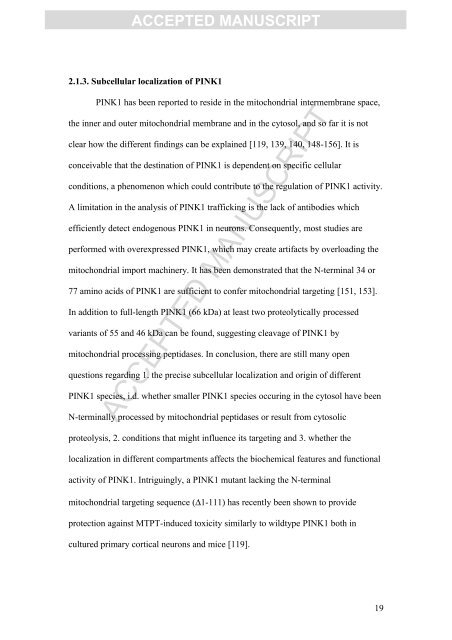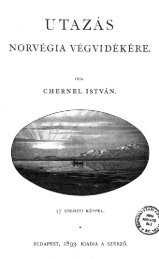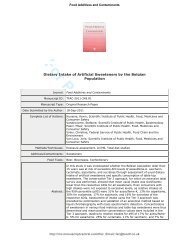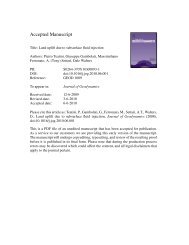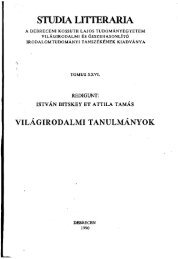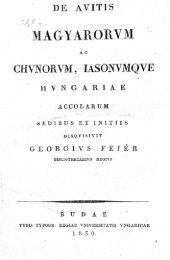accepted manuscript
accepted manuscript
accepted manuscript
You also want an ePaper? Increase the reach of your titles
YUMPU automatically turns print PDFs into web optimized ePapers that Google loves.
ACCEPTED MANUSCRIPT<br />
2.1.3. Subcellular localization of PINK1<br />
PINK1 has been reported to reside in the mitochondrial intermembrane space,<br />
the inner and outer mitochondrial membrane and in the cytosol, and so far it is not<br />
clear how the different findings can be explained [119, 139, 140, 148-156]. It is<br />
conceivable that the destination of PINK1 is dependent on specific cellular<br />
conditions, a phenomenon which could contribute to the regulation of PINK1 activity.<br />
A limitation in the analysis of PINK1 trafficking is the lack of antibodies which<br />
efficiently detect endogenous PINK1 in neurons. Consequently, most studies are<br />
performed with overexpressed PINK1, which may create artifacts by overloading the<br />
mitochondrial import machinery. It has been demonstrated that the N-terminal 34 or<br />
77 amino acids of PINK1 are sufficient to confer mitochondrial targeting [151, 153].<br />
In addition to full-length PINK1 (66 kDa) at least two proteolytically processed<br />
variants of 55 and 46 kDa can be found, suggesting cleavage of PINK1 by<br />
mitochondrial processing peptidases. In conclusion, there are still many open<br />
questions regarding 1. the precise subcellular localization and origin of different<br />
PINK1 species, i.d. whether smaller PINK1 species occuring in the cytosol have been<br />
ACCEPTED MANUSCRIPT<br />
N-terminally processed by mitochondrial peptidases or result from cytosolic<br />
proteolysis, 2. conditions that might influence its targeting and 3. whether the<br />
localization in different compartments affects the biochemical features and functional<br />
activity of PINK1. Intriguingly, a PINK1 mutant lacking the N-terminal<br />
mitochondrial targeting sequence (Δ1-111) has recently been shown to provide<br />
protection against MTPT-induced toxicity similarly to wildtype PINK1 both in<br />
cultured primary cortical neurons and mice [119].<br />
19


